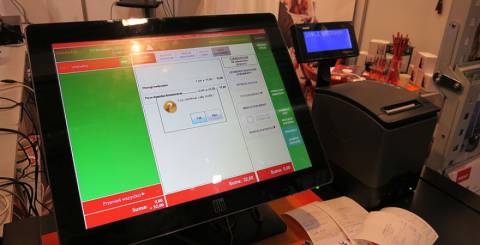How to Integrate Magento eCommerce Site with POS System Efficiently?

The evolution of in-store retail helped to cater to the needs of fast-paced shoppers who wish to conduct their purchases as quickly as possible. As part of this, retail businesses are adopting Omnichannel pipeline to provide a seamless shopping experience. Besides, they can streamline inventory management, get reliable business insights, and increase ROI.
However, to achieve these goals, it is crucial to integrate the eCommerce site and the POS system with the right approach. This article details how merchants can integrate their Magento eCommerce site with in-store point of sale system.
Critical considerations while integrating your Magento store with POS
Though the integration depends on the system that you have at your place, your business requirements, and budget; follow the below tips to find the best solution.
1. Research for an ideal POS
An efficient point of sale system makes the customer checkout process faster and saves your time to do other profitable actions. Therefore, even if you have a POS system for your brick-and-mortar store, you should reconsider all your business requirements and look for an effective POS solution for it. You can consult an expert to find a perfect POS that can work harmoniously with your other systems.
2. Centralize the data
The primary objective of the integration is to keep all data synchronized across the networks. That includes the access and update of orders, purchase, customer data, inventory, and more. A secure Magento backend will help you to manage and monitor the whole business process.
3. Focus on customer & staff experience
It is vital to provide a seamless user experience across platforms. These users include both customers and staff. Therefore, consider the features such as fast checkout process, multiple payment methods, integration of loyalty programs, providing discounts & offers, and more to delight your customers. Besides, the integrated system should help your staff to use it with ease and to get a streamlined view of inventory & other relevant details.
4. Consider third-party integrations
Finding the right third-party applications will help you to link everything together. They can also help to set up and install other useful modules in your eCommerce store. Determine all the possible functions that you would want in the system while expanding your business. Some of the features you can integrate are multi-warehouse management, in-stock management, order fulfillment, purchase management, Ai-powered recommendations, and real-time inventory report.
5. Do it yourself or consult an expert
If you are adept at developing software, then you can create custom modules for your business. Access the API of your POS system and then initialize the integration with your eCommerce site. However, if you have any doubt about creating it or if you do not possess high technical knowledge, then you should consult a Magento professional to do it for you.
Benefits of a custom Magento eCommerce POS system integration for your retail business
Streamlined inventory process: Both the online store and retail store will have the same inventory details of your stand-alone warehouse or a chain of stores.
Cost-cutting compared to traditional POS: The upfront & maintenance costs of a traditional POS system is much higher than using a POS system integrated with Magento.
Easy to install and use: It is easy to install and configure the Magento based POS system. Moreover, attaching the barcode scanner and simple card-swapping device to the system will be a straightforward process.
Compatibility: You can access the cloud-based POS solution from any device browser using the internet. Moreover, you can also build mobile applications, which will be in synchronization with the POS system.
Increase business productivity & efficiency: The accurate insights & reports will help you to make faster and smarter business decisions for selling specific products at times, getting real-time inventory updates, and sending promotional emails to customers.
Conclusion
The Magento point of sale integration helps retail businesses to preserve the products, prices, customer data, orders, stock updates, and more across both the systems, i.e., on eCommerce site & POS. Besides, it allows customers to get seamless purchase experience in-store and on-line with the security of their account details.
An experienced POS development solution providing company can offer the best way to integrate your Magento eCommerce store. When you consult the POS provider, make sure to ask how the integration will work, what you will need to connect the eCommerce site and POS, and which data will be synchronized between these systems.
Similar Articles
Explore how data science is transforming the fintech industry, driving innovation, improving decision-making, and revolutionizing financial services.
In today's competitive business environment, companies are continually seeking ways to enhance efficiency, improve decision-making, and streamline operations. Enterprise Resource Planning (ERP) software has emerged as a vital solution, integrating various business processes into a cohesive system
Ultrasonic cleaning is a powerful, non-invasive method for removing contaminants from surfaces. Using high-frequency sound waves, ultrasonic cleaners create microscopic bubbles that implode upon contact with dirt, oils, or grime, effectively lifting them off.
When we think about efficient transportation within large buildings or crowded areas, we often imagine escalators or elevators. However, there’s another key player in the world of horizontal transportation: moving walkways.
Discover 6 essential IT security policies to protect your organization from cyber threats. Build a robust, compliant, and secure infrastructure today!
Nowadays, the IT world is not imaginable without the cloud. It is extremely difficult to replace the cloud because the technology is bound to evolve. In this constantly changing technology world, nothing can be forecasted. Nevertheless, the cloud has deployed itself in such a way that has become irreplaceable.
A Data Management Platform (DPM) can be defined as a smart assistant that collects data or information from various places, such as websites, apps, and customer databases. A detailed description of the customers is then generated, which contains information about their preferences and behavior
Software testing is imperative to the software development lifecycle, typically ensuring that applications work as intended and fulfill user expectations. Test Data Management (TDM) has become a rather crucial aspect of effective software testing.
It has been amply evident that there is a keen focus on delivering quality software products quickly. Here, DevOps emerges as an effective solution to meet such market demands. After all, it enables organizations to accelerate software delivery while improving business outcomes.









